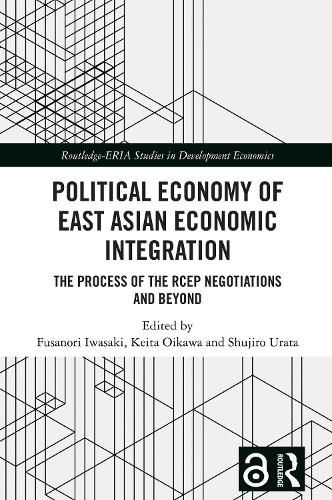Readings Newsletter
Become a Readings Member to make your shopping experience even easier.
Sign in or sign up for free!
You’re not far away from qualifying for FREE standard shipping within Australia
You’ve qualified for FREE standard shipping within Australia
The cart is loading…






This book studies the influence of the Regional Comprehensive Economic Partnership (RCEP) on the East Asia region and the rest of the world from an international relations perspective.
Analysing the history and negotiation process of RCEP through a collection of written interviews from negotiators involved in the RCEP, this book helps readers understand the origins, proceedings, and characteristics of mega-regional trade integration. Individual case studies analyse the RCEP negotiations from the viewpoint of various states or economic blocs, such as ASEAN, Australia, China, Japan, the European Union (EU), and the United States. Several chapters also illustrate the dynamism of the regional architecture in East Asia concerning other regional movements, including the Trans-Pacific Partnership (TPP), Comprehensive and Progressive TPP (CPTPP), Belt and Road Initiative, and the newly launched Indo-Pacific Economic Framework (IPEF). In sum, the chapters illustrate how RCEP member countries and non-member countries try to utilise/maximise their national interests.
This book will interest researchers of international relations, international politics, international economics, and international political economy, as well as policymakers and negotiators responsible for future regional economic integration projects.
$9.00 standard shipping within Australia
FREE standard shipping within Australia for orders over $100.00
Express & International shipping calculated at checkout
This book studies the influence of the Regional Comprehensive Economic Partnership (RCEP) on the East Asia region and the rest of the world from an international relations perspective.
Analysing the history and negotiation process of RCEP through a collection of written interviews from negotiators involved in the RCEP, this book helps readers understand the origins, proceedings, and characteristics of mega-regional trade integration. Individual case studies analyse the RCEP negotiations from the viewpoint of various states or economic blocs, such as ASEAN, Australia, China, Japan, the European Union (EU), and the United States. Several chapters also illustrate the dynamism of the regional architecture in East Asia concerning other regional movements, including the Trans-Pacific Partnership (TPP), Comprehensive and Progressive TPP (CPTPP), Belt and Road Initiative, and the newly launched Indo-Pacific Economic Framework (IPEF). In sum, the chapters illustrate how RCEP member countries and non-member countries try to utilise/maximise their national interests.
This book will interest researchers of international relations, international politics, international economics, and international political economy, as well as policymakers and negotiators responsible for future regional economic integration projects.